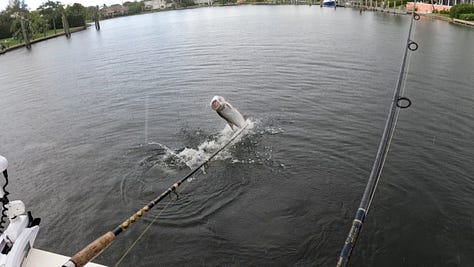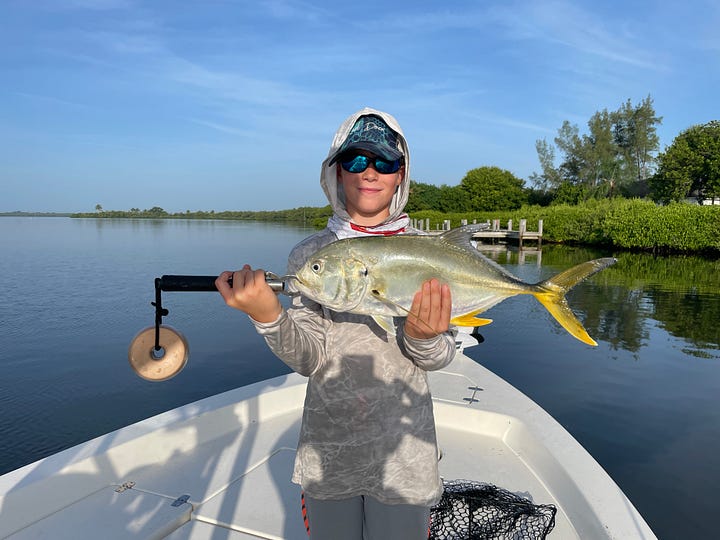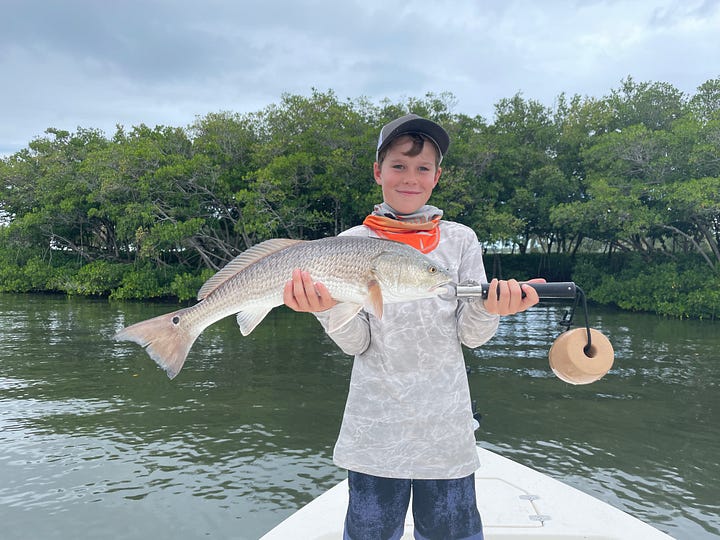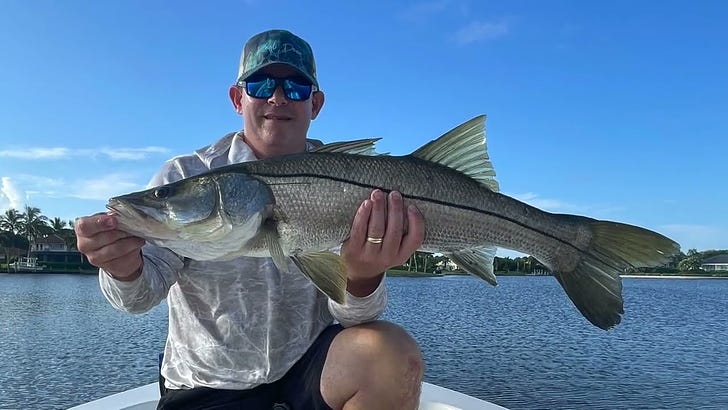




The Fall mullet run is one the best times of year to fish here in south Florida where I live on the Treasure Coast. Millions of finger mullet migrate to this area and with the bait comes all the predator fish - sharks, tarpon, snook, jack crevalle - actually any saltwater species that you can think of is probably chasing these fish this time of year.
The past two years, my son and I have been fortunate to fish at least once a week during the mullet run. As part of my internal focus on being present and spending more time with my family, I have made it a point to make sure that I have monthly activities with my children. My son just happens to love fishing as much as I do, so he and I go frequently.
GEAR AND TACKLE:
The gear is heavier - heavier braided line, heavier leaders, heavier rods, and heavier reels. When you are tossing live bait all day, letting it swim along mangrove edges, seawalls, and around dock pilings, you need heavy gear to get the fish out of the structure.
Here is a video on the gear that I like to use during the mullet run.
As you can see in the videos, the gear is really beefed up. As for knots - I use a uni-uni knot to attach my leader to my braided line. When I am going heavy, I like to have 20lb to 40lb braided line and attach at minimum, 40lb leader - fluorocarbon or regular - doesn’t really matter (see this article from Salt Strong where they tested multiple different leaders and lines).
When it comes to catching bait, using a cast net is really the only way that you can effectively catch the bait. I use an 8 ft cast net with 1/4in mesh. I use a smaller mesh size because I don’t like to get the fish caught in their gills - sacrificing sink rate with the smaller mesh size. However, there are so many mullet, I don’t usually have a problem with the sink rate.
As for Hooks - I tend to use size 3 and size 4 circle hooks and j-hooks when fishing in the river, but if I am headed to the inlets or off of the beach - I use size 5 and 6 circle hooks.
Now, everyone has their different ways that they like to hook mullet.
Personally, I hook the mullet in the tail so that it will swim away from the boat. They also tend to stay on the top of the water. There is nothing better than watching the mullet get blasted when they are swimming on top.
If you want to troll the mullet, then I suggest hooking them in the top lip. Don’t hook both lips as you will drown your bait.
If you want you mullet to swim to the bottom, hook them near the anal fin. This way the bait can get down deeper while swimming away from the boat.
There isn’t much technique when fishing the mullet run. The key is to finding ambush zones is to FIND THE BAIT. No sense in fishing where there isn’t any bait, especially on the flats or around the mangroves (docks and seawalls are different). Seems obvious but I see people fishing this time of year where there isn’t any bait.
As for ambush zones - find mangrove edges where the snook, jacks, tarpon, and redfish can hide and watch for mullet jumping and seeing those predators attack the bait. If the bite is going off, you will see it.
As for docks and seawalls, you might not awlays see bait - but if you are pitching livies around these structures - it shouldn’t take long to get a bite. If you don’t have a bite in the first 2-3 casts - keep moving and cover ground. Some docks and seawalls just hold more fish than others.
The fall mullet run is my favorite time of year to fish. As long as there aren’t any hurricanes barreling down on our coastline, I make every attempt to get out on the water weekly because I know that my best chance to catch more and bigger fish is during this mullet migration.
Let me know if you have any questions and please share this post with anyone whom you think would benefit from reading it.
Remember, You Are Only One Catch Away.
To Wellness on the Water!!!




